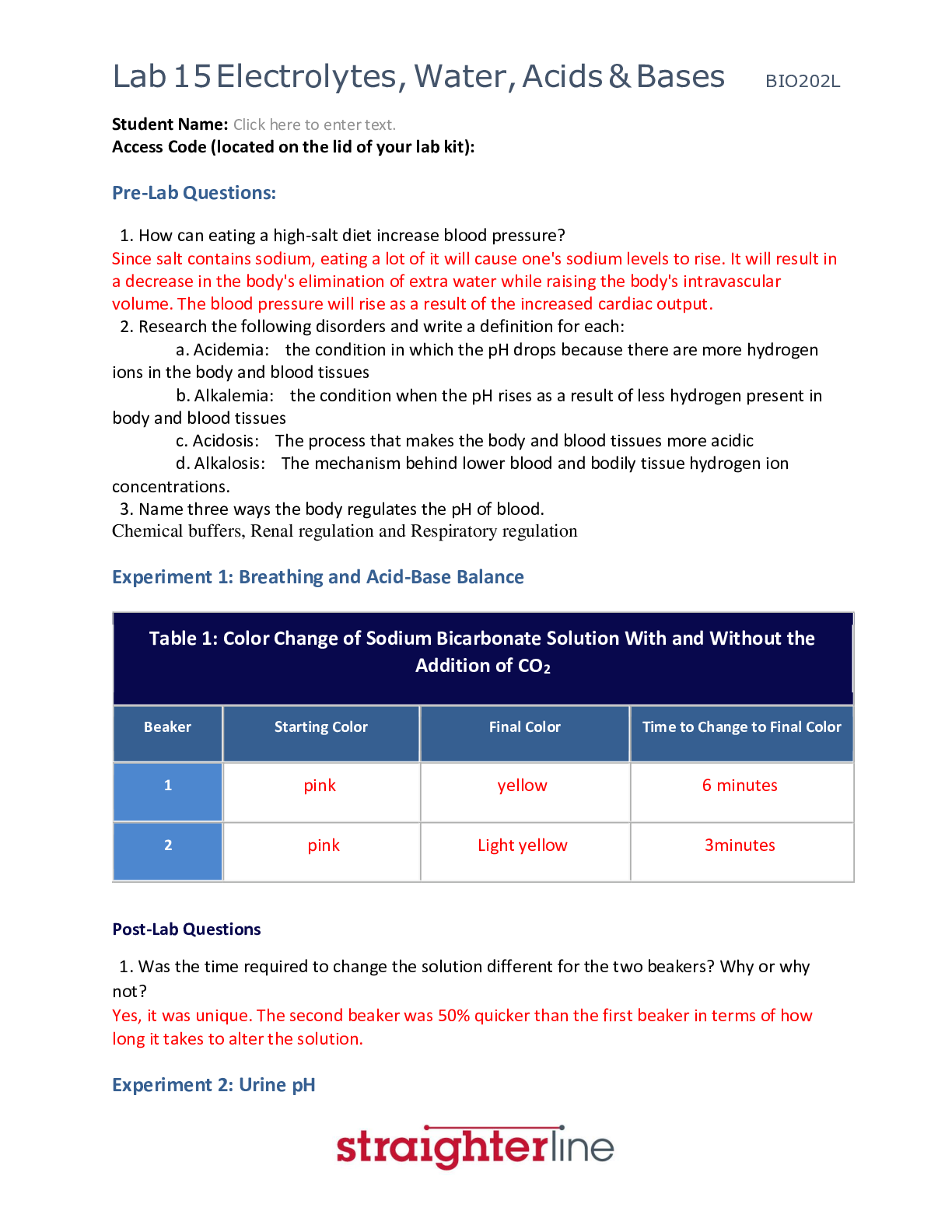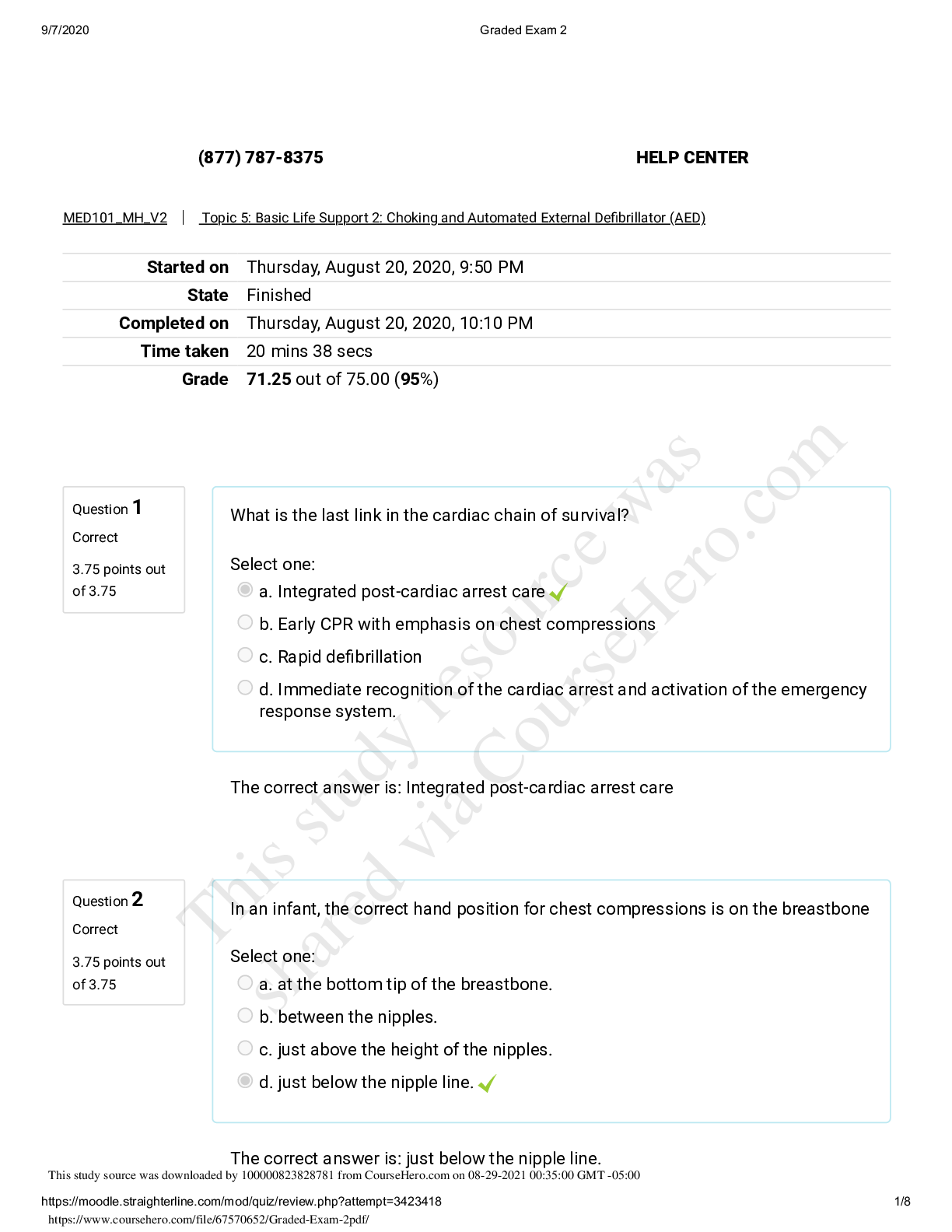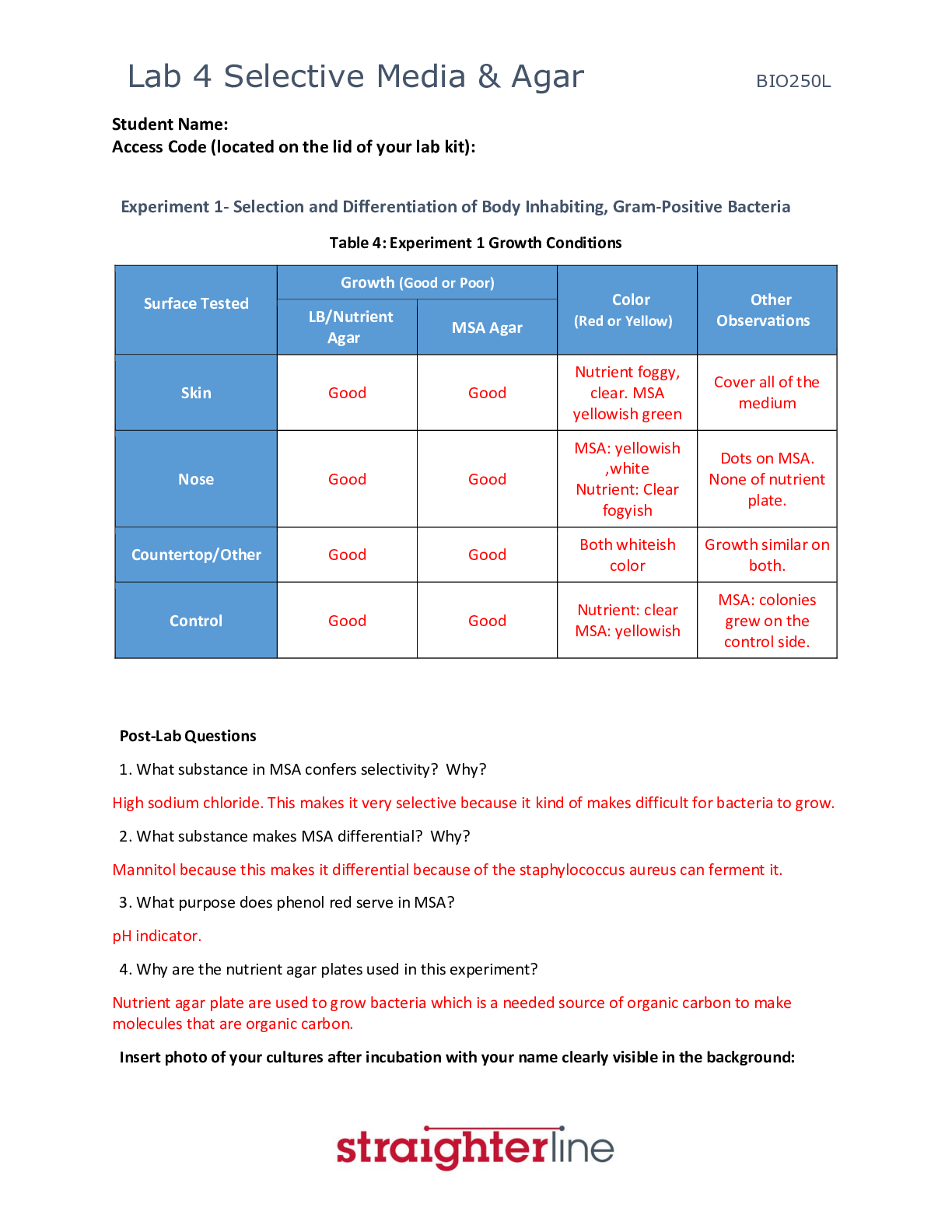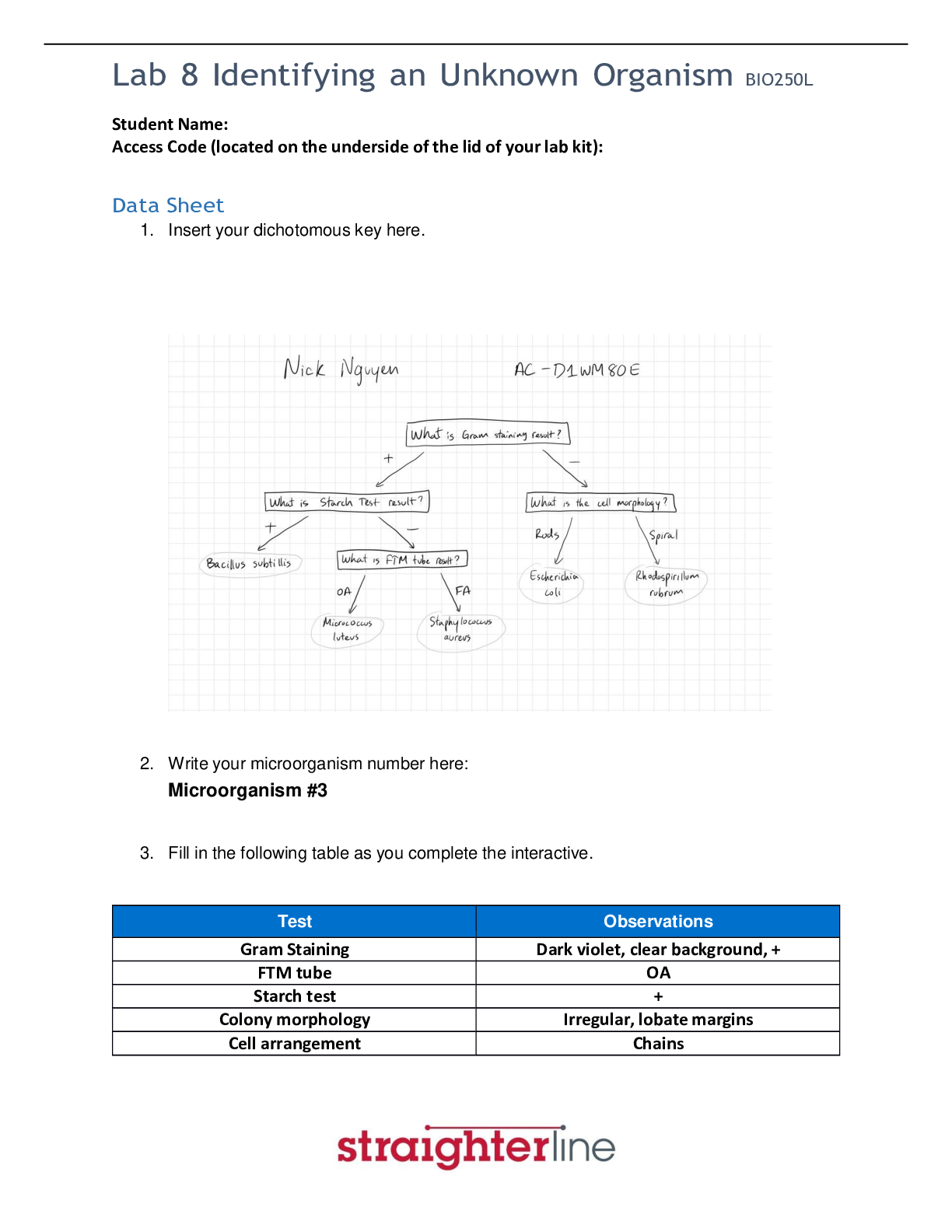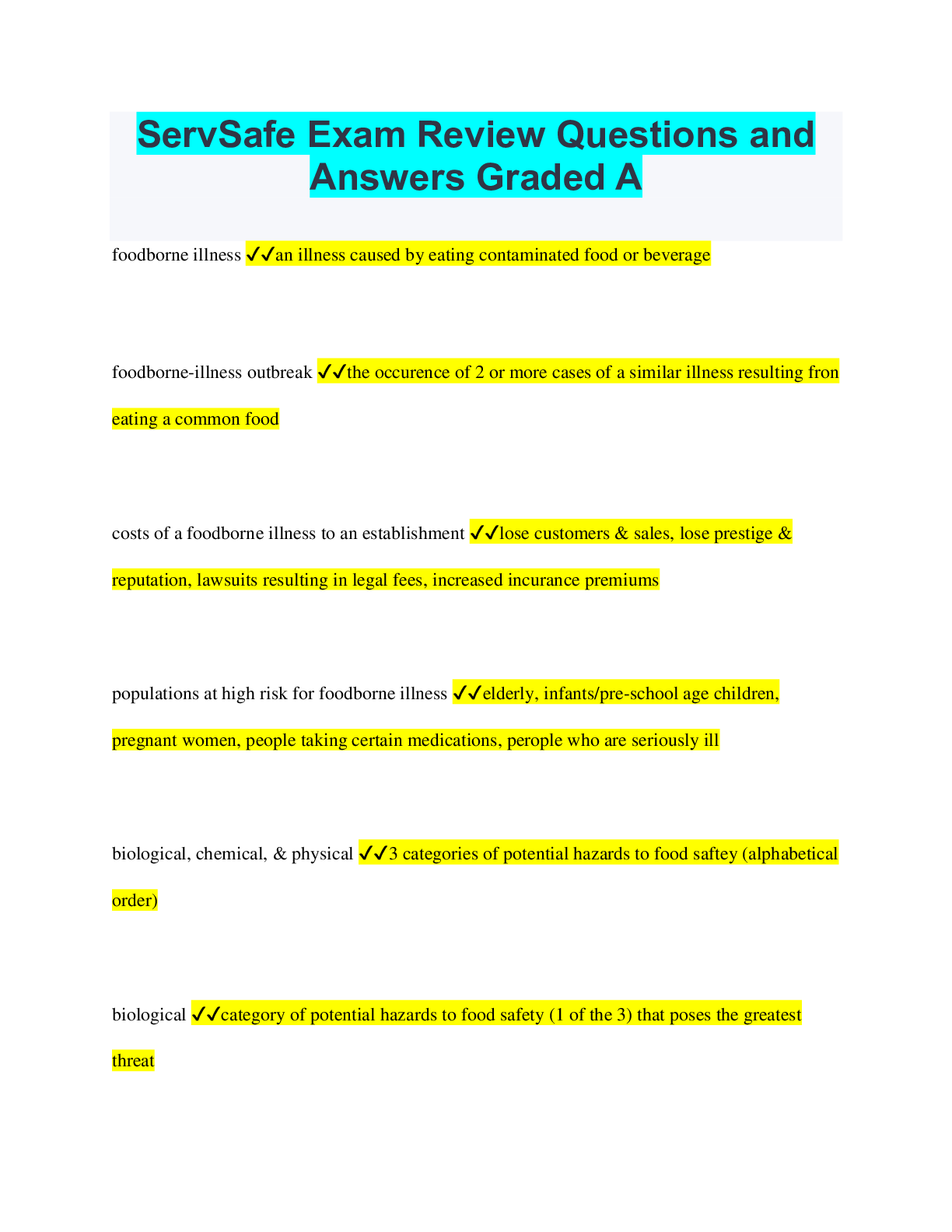Electrical Engineering > EXAM > Sophia_Visual Communications_Milestone 1,100% CORRECT (All)
Sophia_Visual Communications_Milestone 1,100% CORRECT
Document Content and Description Below
Which of the following best defines space? • Space consists of lines. • Space is made up of neutral colors. • Space surrounds form and any other positive elements. 2 Who is Paul Le... ster? • A visual communications theorist whose work created the Omniphasism Model. • A visual communications theorist who developed the practice of incorporating the best methods from previous theories. • A visual communications theorist whose credo was "The more you see, the more you know". • A visual communications theorist who placed value on studying the complete range of media production techniques. 3 Which statement about scale and proportion is true? • They are design elements that positively impact the realistic nature of an image. • They are only applicable in photographic images. • They both can directly affect our perception of elements in an image. 4 Why is proximity a valuable design principle? • It can enhance viewers' perception of grayscale and unity in a design. • It can influence and guide how viewers perceive and navigate a design. • It can help to establish whether an element is the foreground or background. 5 Which statement describes an aspect of the transmission model of communications? • It is also known as semiotics. • It is used only in the disciplines of art and design. • The person who wants to communicate is known as the channel. • Anything that interferes with the process is called noise. 6 Which of the following design elements can be used to create texture? • Dot, shape, and line • Dot, shape, and space • Dot, form, and value • Dot, space, and form 7 Which statement accurately analyzes the design principle evident in this painting? • Balance is shown by the rhythm in the brush strokes. • Scale is shown by the positioning of the different elements in the painting. • Contrast is shown by the stark difference in the colors of the elements in the painting. 8 How are hues arranged on the color spectrum? • By saturation • By value • By wavelength 9 How is asymmetrical balance achieved in the painting below? • The artist uses visual weight from the ducks opposite the people. • The artist shows similar objects mirrored across the painting. • The artist uses a central focal point to create tension. 10 The visual communications theory that is used in many disciplines, and concerns itself with the study of signs and symbols, is __________. • Gestalt theory • semiotics • montage theory • cognitive theory 11 How is the element of space used in this photograph? • The negative space around the woman enables viewers to perceive depth. • The negative space around the woman appears to be closer to the camera while the woman appears to be in the background. • The negative space around the woman creates a flat appearance of space with the sky, woman and the ground. 12 Which of the following is a description for electromagnetic radiation? • The unit used to measure light • Light • Light with the shortest wavelength • The color spectrum 13 Which of the following is NOT an element of design? • Texture • Color • Value • Proximity 14 Which of the following are the characteristics of dot? • A dot has balance, proximity, and a position in space. • A dot has a defined shape, line, and contrast. • A dot has size, a unified shape, and a position in space. • A dot has emphasis, plane, and tension. 15 Which of the following is a principle of design? 1 Dot 2 Line 3 Pattern 4 Emphasis 16 Which of the following statements describes the central principle of Gestalt theory? • The whole is perceived as complete, even if some information is missing. • The whole is greater than the sum of its parts. • The whole is greater than each part. • The whole creates a steady flow of direction. 17 How does value develop form? • By using design principles • By using dramatic lighting • By using texture and repeating elements • By using a grayscale between white and black 18 Which of the following is the definition of a plane? • An area that has a width, a height, and a depth. • The third dimension that differentiates form from shape. • An area within a surface that extends to a specific direction or position. • The amount of three-dimensional space occupied by a form. 19 Which characteristic is a component of the line element in visual design? • Shape • Balance • Length • Volume 20 How is rhythm shown in this image? • Rhythm is shown by some squares having lines bordering them on all sides, and others not having any lines bordering them. • Rhythm is shown by the movement of line (left to right) through the colored squares, with each square smaller than the previous square. • Rhythm is shown by the color at the start of the line (left) being yellow and the color at the end (right) being purple. 21 Which of the following is a visual communications theory that focuses on the viewer using a series of mental processes? • Omniphasism • Cognitive theory • Montage theory • Gestalt theory 22 Contrast is an effective way to create _________ in a design or image. • a focal point • a sense of unity • a sense of rhythm 23 Which of the following statements about montage theory is NOT true? • It was pioneered by filmmakers in Russia. • It often depends on the use of conflicting or unrelated images. • It makes use of slow transitions from scene to scene. • A Russian psychologist, Lev Kuleshov, experimented with montage. 24 How do the elements of a design show unity? • If the elements of a design distract attention from one another • If the elements of a design work together in harmony • If the elements of a design are unbalanced • If the elements of a design lack space 25 Which of the following qualities are what make a form three-dimensional? • Width, height, and depth • Shape, height, depth • Width, depth, shape • Width, height, shape 26 Which of the following best defines emphasis? • Emphasis is the use of a prominent element or focal area in a design. • Emphasis is the use of different design principles in a design. • Emphasis is the use of different colors in a design. • Emphasis is the use of different design elements in a design. [Show More]
Last updated: 1 year ago
Preview 1 out of 5 pages

Reviews( 0 )
Document information
Connected school, study & course
About the document
Uploaded On
Oct 23, 2020
Number of pages
5
Written in
Additional information
This document has been written for:
Uploaded
Oct 23, 2020
Downloads
0
Views
218























